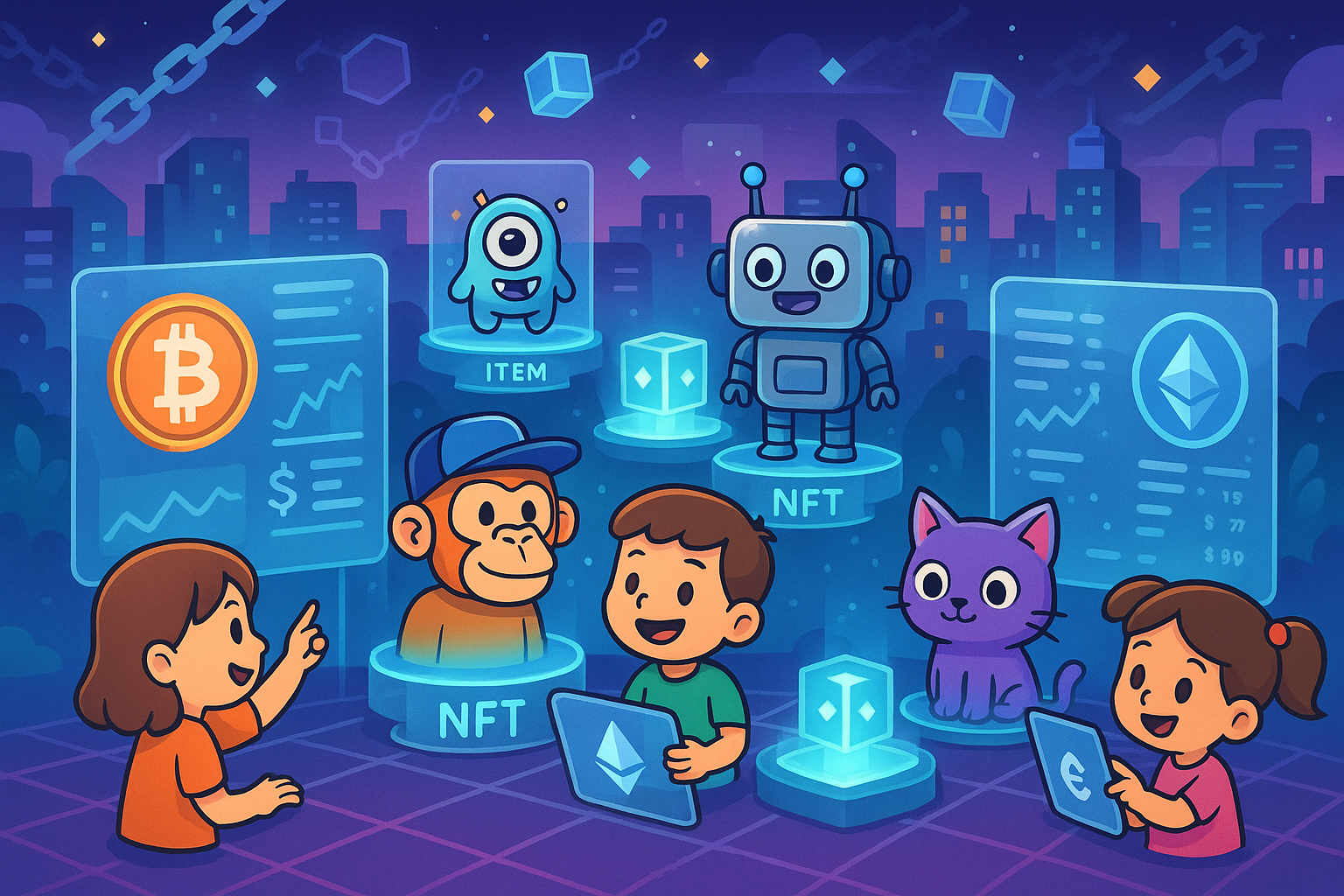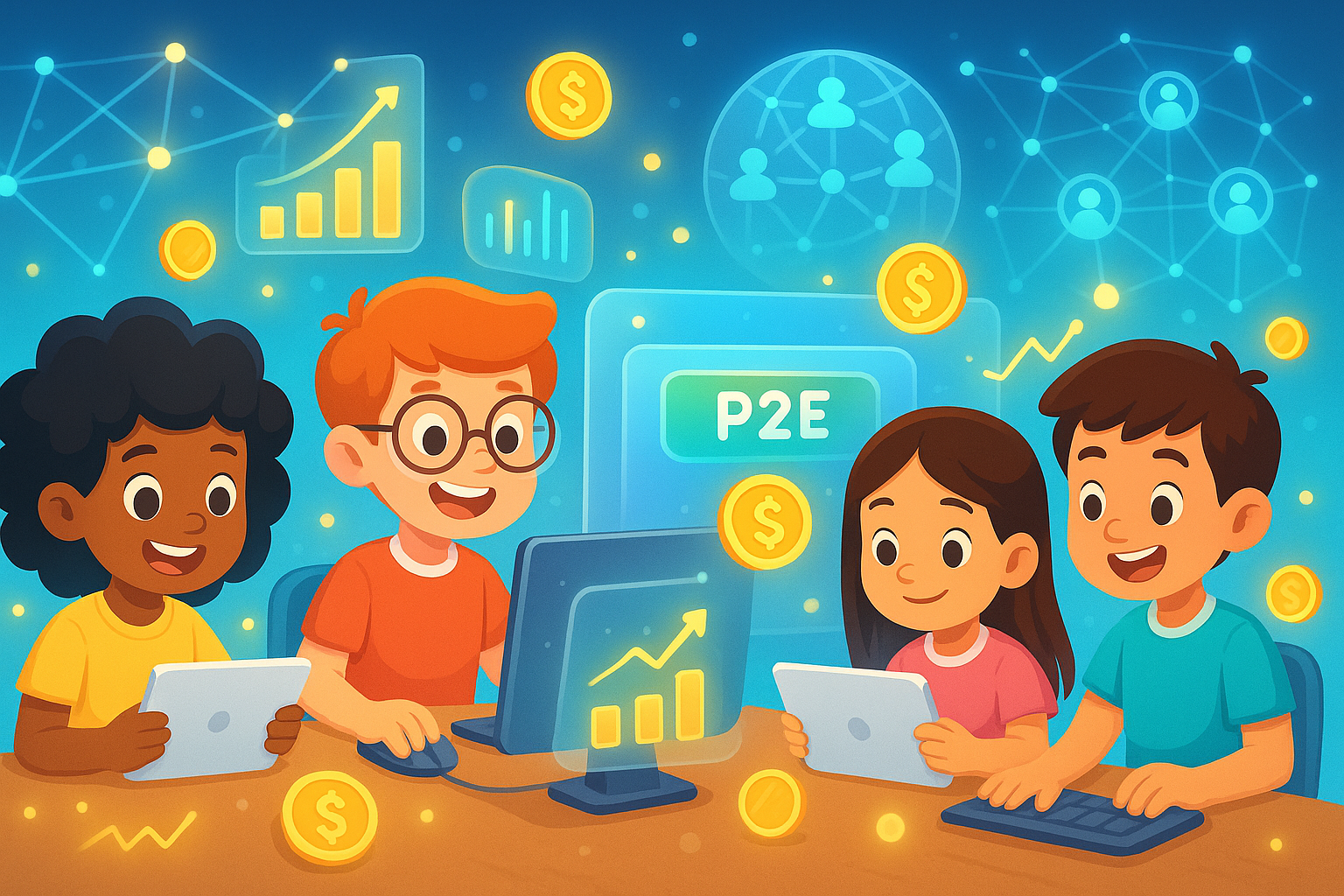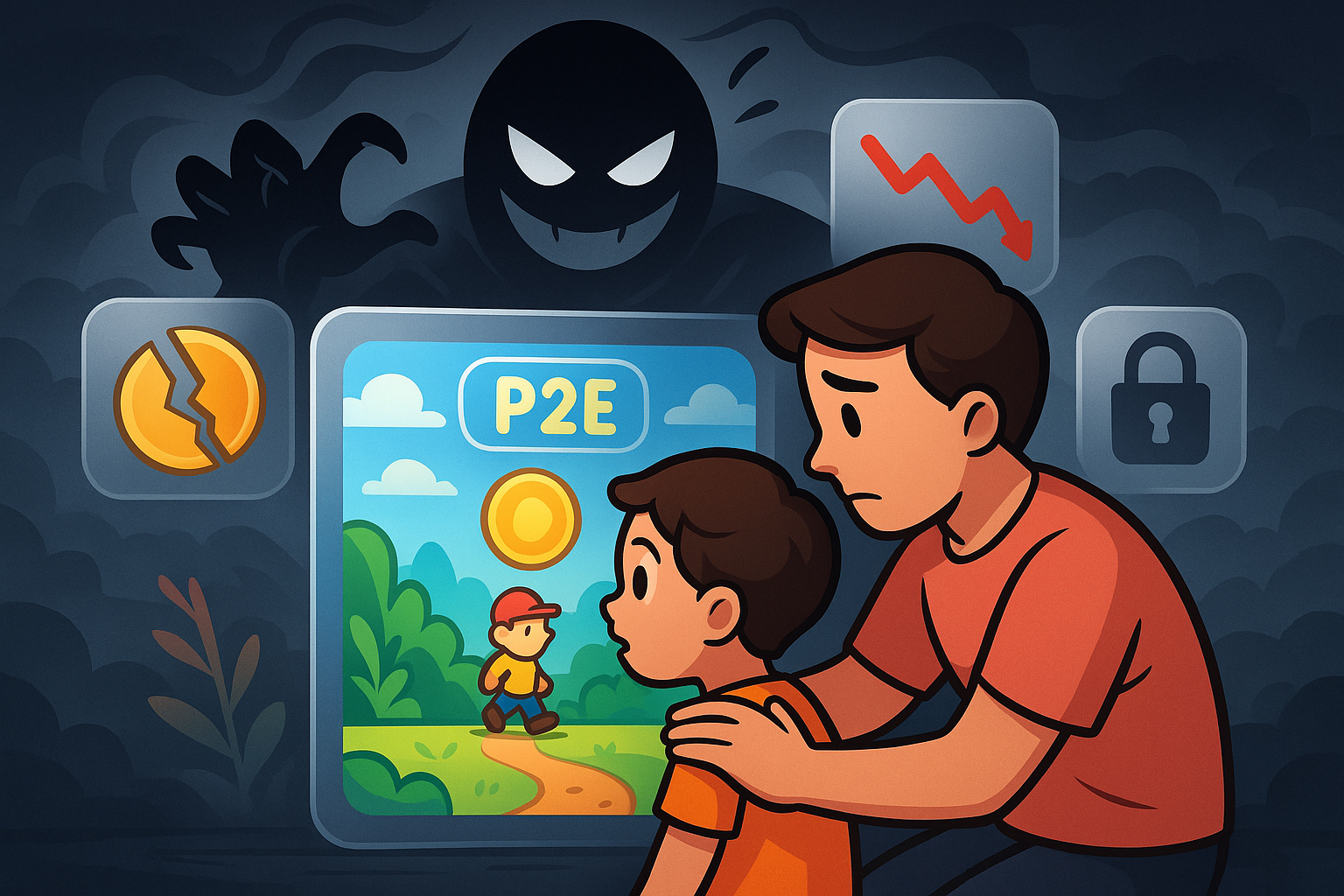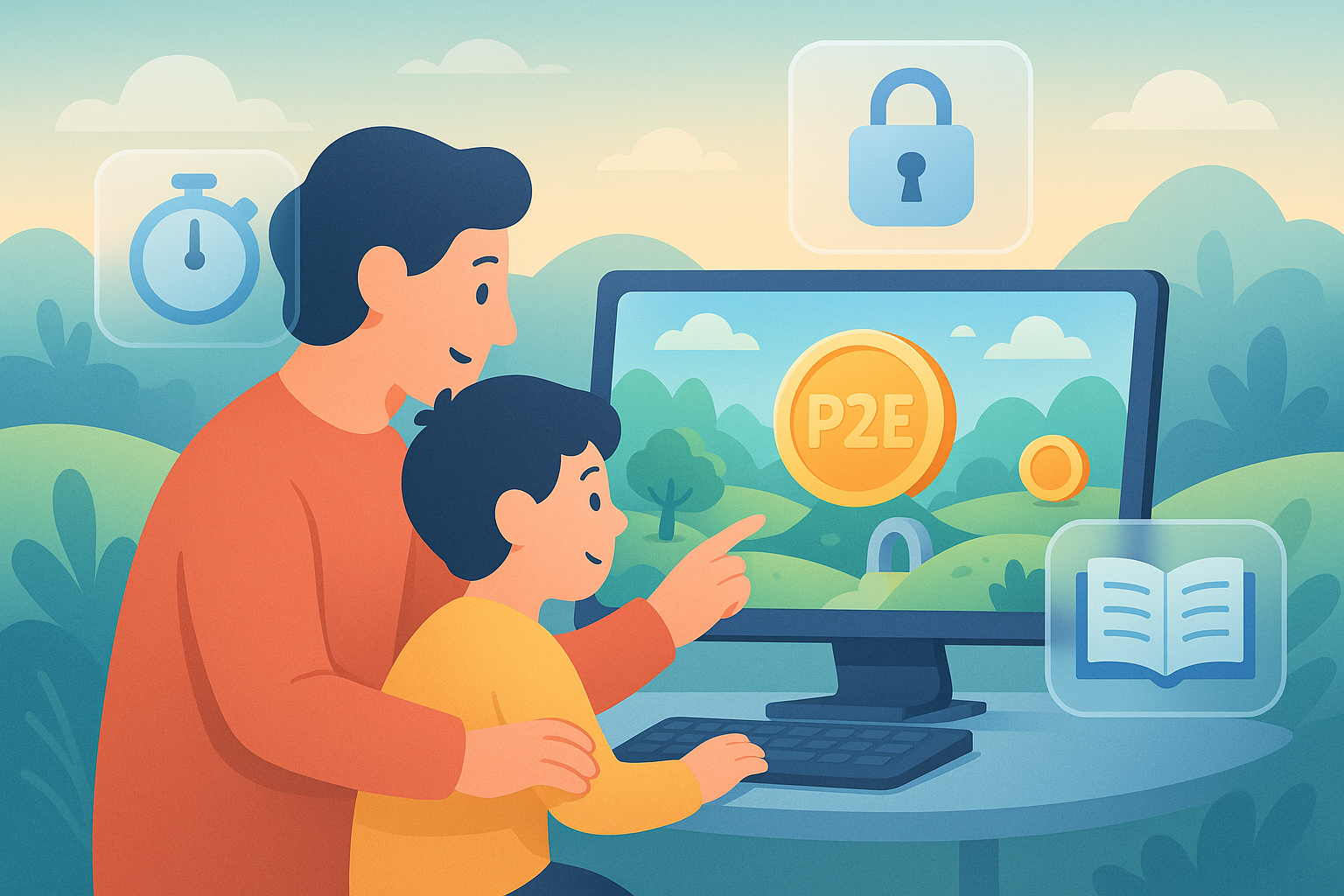Navigating the Digital Playground: A Parent's Guide to Play-to-Earn Games
The world of gaming has evolved dramatically, and with it, new concepts like 'Play-to-Earn' (P2E) have emerged, blending entertainment with intriguing financial opportunities. For many parents, this blend can seem both exciting and daunting. Is it just another video game, or is there real potential – and real risk – involved? This guide is designed to help you understand what P2E games are, how they work, and most importantly, how to navigate them safely and effectively as a parent. We're here to demystify the buzzwords and provide a clear roadmap for exploring this captivating digital frontier with your children, ensuring that learning and fun remain at the forefront.
What are Play-to-Earn (P2E) Games?
At its core, a Play-to-Earn game is exactly what it sounds like: a game where players can earn valuable assets simply by playing. Unlike traditional games where in-game items are confined to that specific game and are ultimately owned by the game developer, P2E games leverage blockchain technology to give players true ownership of their digital assets. These assets can be anything from unique characters and rare items to virtual land and even game currency. This ownership is often represented by Non-Fungible Tokens (NFTs), which are unique digital identifiers recorded on a secure, decentralized blockchain. This means your child can not only play for enjoyment but also potentially earn, trade, or sell these digital assets for cryptocurrency, which can then be converted into real-world money. It's a significant paradigm shift, transforming players from mere consumers into active stakeholders in the game's economy.

How Do P2E Games Work?
The mechanics of P2E games vary widely, but they generally revolve around a few key principles. Players typically start by acquiring some initial assets, which might be free starter characters, or they may require a small investment to purchase NFTs that grant access or provide competitive advantages. From there, gameplay usually involves completing quests, battling other players, breeding digital creatures, cultivating virtual land, or simply participating in the game's broader economy. As players engage and achieve in-game goals, they earn rewards. These rewards often come in the form of in-game cryptocurrency tokens specific to that game, or new NFTs. These tokens and NFTs can then be sold on decentralized marketplaces to other players, or traded for other established cryptocurrencies like Ethereum or Solana, and eventually, if desired, converted into fiat currency. The value of these digital assets is determined by supply and demand, much like real-world commodities or stocks. It's a dynamic ecosystem where players are active participants in creating and exchanging value. Understanding the 'tokenomics' – how the game's economy is structured, how tokens are earned, and what their supply and utility are – is crucial for both parents and children.

The Upside for Kids and Parents
Beyond the entertainment, P2E games offer several surprising benefits for children and, by extension, their parents. Firstly, they can be an incredibly engaging way to introduce fundamental concepts of financial literacy. Kids learn about supply and demand, asset valuation, trading strategies, and even the basics of investing, all within a context they find genuinely exciting. Managing a digital wallet, understanding transaction fees, and making informed decisions about when to buy or sell can foster a practical understanding of economics that traditional lessons often struggle to achieve. This hands-on experience can demystify financial concepts in a way that is highly relevant to their digital-native generation.
Secondly, P2E games often demand strategic thinking, critical analysis, and sophisticated problem-solving. Whether it's optimizing a character build for battle, planning efficient resource collection, navigating trade routes, or predicting market trends, these games can significantly sharpen cognitive skills. Many games also foster strong online communities, teaching collaboration, negotiation, and social skills in a global, interconnected context.
Thirdly, they provide an early, hands-on introduction to cutting-edge technology like blockchain and NFTs. Understanding these concepts now can give children a significant advantage in a future increasingly shaped by Web3 technologies and decentralized digital economies.
Lastly, for some families, the potential to earn a modest income – whether for pocket money, saving for a desired item, or even contributing to family goals – can be a powerful motivator and a valuable lesson in the rewards of sustained effort and smart decisions. When managed correctly, this can teach responsibility and the value of digital labor.

The Downsides and Risks to Consider
However, it's absolutely essential to approach P2E with a healthy dose of caution and a clear understanding of the inherent risks. The landscape is not without its pitfalls, and parents must be aware of them to protect their children.
The most significant risk is the volatility of cryptocurrency and NFT markets. The value of in-game assets can fluctuate wildly, leading to potential losses, sometimes rapidly and unexpectedly. What might be worth a substantial amount one day could be nearly worthless the next. Parents must be prepared for this inherent instability and ensure their children understand it too, emphasizing that past performance is not indicative of future results.
Another major concern is the potential for scams, 'rug pulls' (where developers abandon a project after raising funds), and security vulnerabilities. Not all P2E projects are legitimate; some are poorly designed, unsustainable, or, worse, intentionally malicious, designed purely to extract money from players. Children, and even adults, can be susceptible to phishing attempts, social engineering scams, or falling for projects that make unrealistic promises of guaranteed high returns. Security of digital wallets is paramount, and breaches can lead to significant losses.
Time commitment is also a significant factor. The 'earn' aspect can sometimes incentivize excessive screen time, blurring the line between healthy play and compulsive activity. This can impact schoolwork, real-world social interactions, and overall well-being if not carefully managed. Initial investment requirements can also be a barrier or a risk if the game doesn't perform as expected or if the assets lose value.
Furthermore, the regulatory environment around P2E and blockchain gaming is still evolving and varies significantly by region, which adds an layer of uncertainty and potential future complications. Finally, age appropriateness is crucial; complex financial systems, the emotional rollercoaster of volatile markets, and the potential for significant losses may not be suitable for very young children. Always do your due diligence and remember that not every game is safe or beneficial for every child.

A Parent's Action Plan: How to Navigate P2E Responsibly
So, how can you responsibly introduce your child to this exciting yet risky world, turning potential pitfalls into valuable learning opportunities?
- Research Extensively: Before letting your child dive into any P2E game, research the project thoroughly. Look for established games with a clear roadmap, an active and engaged community, transparent developers, and audited smart contracts. Check independent reviews, community sentiment, and analyses of the game's tokenomics and sustainability.
- Start Small, Learn Together: Begin with games that have a low or even no initial investment, often called "free-to-play, earn-to-play" models. Play the game yourself, or alongside your child, to truly understand the mechanics, the economics, and the community dynamics. This should be a journey of shared learning and discovery.
- Set Clear Boundaries: Establish strict screen time limits and discuss spending allowances for any in-game purchases or initial investments. Emphasize that the primary goal is fun, learning, and developing new skills, not solely earning money. Treat any earnings as a bonus, not a guaranteed income.
- Educate on Security: Teach your child about secure digital practices: creating strong, unique passwords for every account, understanding phishing risks, and the absolute importance of never sharing private keys or 'seed phrases' for cryptocurrency wallets. For any significant holdings, consider using a hardware wallet for enhanced security.
- Focus on Financial Literacy: Use P2E as a powerful teaching tool. Discuss market fluctuations, the concept of risk versus reward, the difference between 'play' and 'investment,' and the importance of diversification. Help them understand that real money or its equivalent is involved and that losses are a genuine possibility, just like in any real-world market.
- Diversify Experience: Encourage your child to engage with other forms of play and learning – traditional games, sports, creative hobbies, and outdoor activities. P2E should be one facet of a well-rounded digital and real-world experience, not the sole focus.
- Consider Age Appropriateness: Choose games suitable for your child's age and maturity level. Simpler card games, puzzle games with earning elements, or resource management games might be better entry points than complex economies with high stakes or intense competitive play.
By taking a proactive, informed, and involved approach, you can transform the potential risks of Play-to-Earn games into valuable, hands-on learning opportunities that prepare your children for an increasingly digital and decentralized future.

Current Trends and What to Look For
The P2E space is rapidly evolving, making it crucial for parents to stay updated. We're seeing a significant shift towards more mobile-friendly games, making them accessible to a broader audience and integrating P2E into everyday phone usage. The integration of P2E elements into broader metaverse experiences is also a significant trend, where players can earn across interconnected virtual worlds and own digital identities or properties that span multiple platforms. Guilds and scholarship programs, which allow players without initial capital to 'rent' NFTs from others and share earnings, are becoming more common, lowering the barrier to entry but also adding another layer of contractual complexity.
Keep an eye on games that prioritize sustainable economic models, rather than hyper-inflationary tokenomics that quickly devalue assets. Look for projects with strong intellectual property, innovative and genuinely enjoyable gameplay that would be fun even without the earning potential, and a clear commitment to long-term development. As the technology matures, expect more sophisticated anti-scam measures, clearer regulatory frameworks, and potentially more user-friendly interfaces, which will hopefully make the ecosystem safer and more accessible for younger participants and their families.
Conclusion
Play-to-Earn games represent a fascinating convergence of gaming, cutting-edge technology, and modern finance. While they offer exciting possibilities for engaging learning and even modest earnings, they also come with inherent risks that parents must understand and actively manage. By staying informed, setting clear boundaries, fostering open communication, and approaching P2E as a shared learning experience, you can empower your children to explore this new digital frontier responsibly and intelligently. Remember, the ultimate goal isn't just about earning; it's about learning, growing, and navigating the complexities of the digital world with confidence, wisdom, and a balanced perspective. Happy gaming, and happy learning!

